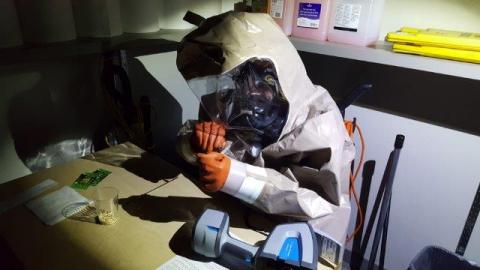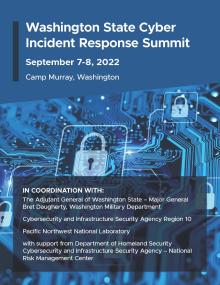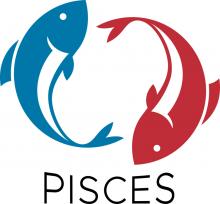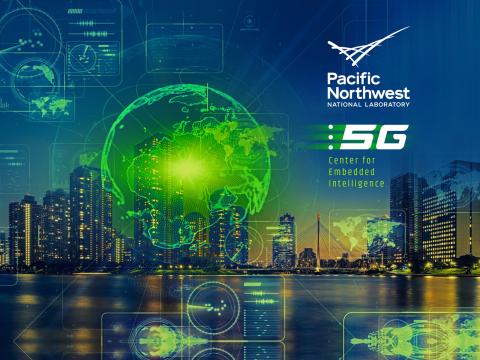NWRTC Projects
Fostering a collaborative spirit across jurisdictions, agencies, and beyond.
For more than 15 years, NWRTC has served the northwest region’s homeland security stakeholders and the communities involved in public safety, preparedness, and response mitigation and recovery. The NWRTC leadership team serves the region through various organizations building partnerships and impact throughout the region including:
- National Academy of Sciences
- Pacific Northwest Defense Coalition
- Association of Washington Business
- Northeastern University
- Washington Military Alliance
- Area Maritime Security Committee for Puget Sound
NWRTC also participates in partnerships and programs that engage emergency responder communities and federal, state, and local stakeholders in the Northwest and beyond. Several recent and relevant engagements are highlighted below. For details, see the Archives or contact nwrtc@pnnl.gov.
Emergency Management of Tomorrow Research
The emergency management (EM) threat landscape is evolving at an unprecedented pace, calling for a dynamic and adaptable approach to integrate new technologies and existing R&D from academic and government institutions. To address this challenge, the Department of Homeland Security (DHS) Science and Technology Directorate (S&T) is partnering with PNNL to execute the EM of Tomorrow Research (EMOTR) program to assess current research in EM, elicit capability needs from practitioners, and identify where technology, such as artificial intelligence, may benefit the future of EM and emergency operations centers. EMOTR delivered an iterative approach to inform future R&D and investments for the EM community. Learn more at https://www.dhs.gov/science-and-technology/em.
Check out the program overview:
Resilience, Response, and Recovery

Integrated Biological Restoration Demonstration
For several years, the U.S. Defense Threat Reduction Agency and DHS collaborated with the Seattle Urban Area Security Initiative to conduct the Interagency Biological Restoration Demonstration Program. The program provided coordinated, system-level approaches for the recovery and restoration of urban areas, military installations, and critical infrastructure following the aerosol release of a biological agent.
In September 2010, the Interagency Biological Restoration Demonstration Program culminated in a three-day capstone event. The Seattle event drew more than 250 attendees from military, federal, state, and local agencies, as well as from the private sector. More than 300 people also watched via simultaneous webcast. The end product was the first-of-its-kind regional recovery framework for a biological incident.
See the report: Regional Recovery Framework for a Biological Attack in the Seattle Urban Area
Wide-Area Recovery and Resiliency Program
The IBRD program, a successful partnership among the Seattle Urban Area, Joint Base Lewis-McChord, DHS, DTRA, and many private sector players, was completed in September 2010. A follow-on program began in Denver as the Wide-Area Recovery and Resiliency Program (WARRP). WARRP sought to develop solutions to reduce the time and resources required to recover wide urban areas, military installations, and other critical infrastructures following a catastrophic chemical, biological, or radiological incident.
The goals of the program were to:
- Develop/refine guidance, plans, and decision frameworks for long-term recovery that can be leveraged for other parts of the country and internationally, as applicable.
- Identify, develop, refine, demonstrate, and transition technologies and standards that support recovery prioritization, planning, and operations.
- Better understand the public health strategies and challenges related to long-term recovery and recommend changes as needed to public health guidance and/or plans.
Improving Predictions and Response
When disaster strikes, assessing hazard extent and damage is the first step toward restoring community lifelines. The Rapid Analytics for Disaster Response (RADR) software suite, an R&D 100 award-winning technology, is an all-hazards detection system that combines multi-modal imagery, artificial intelligence (AI), and scalable cloud computing with an infrastructure damage assessment tool to understand current impact and risk to infrastructure from wildfires, floods, hurricanes, earthquakes, and more. The system is built to deliver high-resolution, high-cadence, large-extent situational awareness for incident command and disaster management teams to understand hazard extent, communities affected, impacts to critical infrastructure, blocked transportation routes, structural damage, and safe locations to establish relief efforts. All algorithms in RADR have been developed based on community requests.
Immersive Imaging Systems
The Guardian Immersive Imaging System, or Guardian IIS, provides up to a 360-degree view of high-resolution video for security operators, training and other tactical applications. With this technology, pan-tilt-zoom is done digitally, allowing operators to view multiple points of interest, while still capturing and recording the full field of view. The award-winning IIS technology was licensed to Consolidated Resource Imaging, LLC and can be custom configured to provide a 90- to 360-degree area of coverage, depending on the installation location.
Risk Reduction and Optimal Resource Allocation Modeling
PNNL has designed and partnered with local transportation partners (Washington State Ferries, Washington State Patrol, Transportation Security Administration, and others) to operationally deploy risk assessment modeling tools such as the Airport Risk Assessment Model (ARAM) that dynamically compute system risk over time to determine how to best allocate security resources. The tools quickly calculate the needs and best assignment of assets—security personnel, security scanners, and other countermeasures—that work together in innumerable combinations to keep passengers and transportation hubs like airports and ports safe. The easy-to-use, web-based tools recommend where to best deploy security assets on an hourly basis.
ARAM is currently available for licensing. See PNNL Available Technologies for more information.
Crisis Management
In 2018, PNNL hosted a group of five officials from the Jordanian National Center for Security and Crisis Management for a four-day visit to learn more about how the state of Washington and the city of Seattle handle crisis management. The visit was sponsored by the U.S. Department of State. The National Center for Security and Crisis Management is Jordan’s national crisis management center that manages national-level crises including terror attacks, chemical spills, natural disasters, and is expanding its capabilities in partnership with the U.S. government. The group visited with emergency response professionals from the state of Washington Emergency Management Division and the Washington State National Guard, Seattle/King County Public Health, Washington State Department of Health, Northwest Healthcare Response Network, U.S. Coast Guard Joint Harbor Operations Center, and the Seattle Fire Department. The officials also participated in a discussion at PNNL on disruptive technologies and how augmented/virtual reality may change the way information is shared among first responders and crisis managers.
First Responder Technology
First Responder Capability Roadmap
The first responder landscape is a mix of technology, evolving threats, and diverse user needs. DHS S&T and PNNL are leading the First Responder Capability Roadmap to connect with first responders nationwide, understand their technology needs, and create an actionable framework for strengthening capabilities and technology in the coming years.
Responder Technology Alliance
First responders across the nation need advanced technologies to enhance health, safety, and performance when faced with complex threat environments. As new technologies come to market at a record pace, solutions available to firefighters, law enforcement, and emergency medical services lag. To bridge this widening gap, PNNL managed the DHS First Responder Group's Responder Technology Alliance to envision first responder needs ten years in the future. Additionally, the Responder Technology Alliance aims to accelerate the development and integration of technology solutions to significantly improve the safety and capability of first responders and transform the future of first response.
The Future of First Response video series captures the Responder Technology Alliance’s work to partner with the first responder community and craft a shared vision on the needs and requirements for future technologies.
Watch the Future of First Response:
- Future of First Response: System Summary
- Future of First Response: Vision for Firefighting
- Future of First Response: Vision for Police
- Future of First Response: Vision for Emergency Medical Services
Human-Machine Teaming

Much of today’s human-machine interaction places a heavy burden on the human. The human is often either directing the tool to perform specific tasks or closely monitoring automated assistants to ensure accurate performance. Developers are faced with the challenge of building machines that can work toward the larger task goals and are capable of more than blindly executing tasks. These new machines can both enhance team performance and minimize the work required for the human to manage the machine. At PNNL we are striving to develop tools that function less like a tool and more like a teammate. We are developing systems with greater awareness of their environment and that make smart recommendations based on their understanding of context. In addition, our research and development efforts focus on developing machine learning tools that can learn from the work patterns and preferences of users to improve the system’s understanding and communication with the user. To learn more, see Human-Machine Intelligence: Optimizing skills and resources between human and machine teammates.
System Assessment and Validation
Staff at PNNL are involved with the DHS S&T SAVER—System Assessment and Validation for Emergency Responders—program, participating in focus groups and other assessment activities designed to assist emergency responders in making procurement decisions. The SAVER Program conducts assessments and validations on commercial equipment and systems, and provides those results along with other relevant equipment information to the emergency responder community.
Recent highlights from the program include:
- Team Receives Science, Engineering Award for Evaluation of Firefighter Safety Technology
- Self-Contained Breathing Apparatus Market Survey
- Physiological Monitoring Systems for Emergency Responders SAVER Assessment Report
- Handheld Raman Spectrometers Assessment Report
- Handheld Raman Spectrometers Focus Group Report
For more information, visit: https://www.dhs.gov/science-and-technology/saver.

Operational Field Assessments
With new technology coming to market at a record pace, how do we know products are reliable, durable, and secure enough to make our nation’s emergency management professionals safer, better connected, and fully aware? To ease that process, PNNL, on behalf of the DHS S&T First Responders Group, created the "First Responder Technology Operational Field Assessment User Guide". This user-friendly, streamlined approach joins technology developers, users, and subject matter experts in assessing technology products in a consistent way.
Precision Information Environments
Working with stakeholders from across the emergency management community, and with sponsorship from the Command, Control and Interoperability Division Basic/Futures Research program within the Department of Homeland Security’s Science and Technology Directorate, researchers at PNNL are developing future work environments for emergency management. Precision Information Environments (or PIEs) provide tailored access to information and decision support capabilities that adapt to the varying users and phases of emergency management. Precision Information Environments provide analysis and simulation capabilities through novel interactions that transform planning, communication and decision making by first responders, policy makers, and the public.
Cybersecurity
Washington State Cyber Incident Response Summit

On September 7 and 8, 2022, PNNL and Washington State Adjutant General – Major General Bret Daugherty, with support from the DHS Cybersecurity and Infrastructure Security Agency (CISA), hosted the Washington State Cyber Incident Response Summit at Camp Murray in Washington State. The summit was by invitation only and convened 40 key decision makers and stakeholders from across the state to discuss strategies and pilot a collaborative approach to improve cyber incident response readiness within Washington State. In small working groups, participants shared incident response lessons learned, best practices, and opportunities for improvement within the water and transportation sectors. “It is critical we develop strategies not only to protect and detect, but also to quickly respond and recover so when our castle wall is compromised, our work will continue,” said Daugherty. Ultimately, the summit outlined common areas of opportunity and next steps to advance sector-specific cyber incident response planning within Washington State.
Public Infrastructure Security Cyber Education System

Thanks to a new partnership called PISCES—the Public Infrastructure Security Cyber Education System— several smaller cities and counties now have access to free network information security monitoring.
In partnership with the DHS Cybersecurity and Infrastructure Security Agency and PNNL, PISCES teams with the private sector, colleges and universities, and local governments to provide no-cost cybersecurity event monitoring to small public sector organizations. PISCES provides a controlled data-sharing network that allows cybersecurity students at qualified educational institutions to provide live insights to communities in need of critical cybersecurity analysis.
PISCES is actively seeking university and community partners. Visit http://www.pisces-intl.org or see the June 2021 NWRTC Notes from the Field newsletter to learn more.
Cybersecurity Summits
The Snohomish County Public Utility District and PNNL cohosted a series of Washington State Cybersecurity Summits to convene regional partners and industry leaders in engaging discussion around issues concerning cybersecurity and the nation’s critical infrastructure.
- Cybersecurity Summit 2018
- Cybersecurity Summit 2016
- Cybersecurity Summit 2014
- Cybersecurity Summit 2013
5G

Verizon 5G Ultra-Wideband
Verizon recently announced a partnership that will make PNNL the U.S. Department of Energy’s first national laboratory with Verizon 5G ultra-wideband wireless technology. This collaboration will allow PNNL researchers to explore how 5G can transform diverse mission areas, including cybersecurity, the protection of grid infrastructure, and the science behind autonomous systems. With the network on site, researchers will be able to test how faster speed and increased bandwidth can be used to enhance machine learning, artificial intelligence, and public safety. This testing may enable wide-ranging applications, which can benefit everything from chemistry and Earth sciences, to the needs of first responders. See the press release for details. For more information, contact Scott Godwin scott.godwin@pnnl.gov.
Maritime

Preventative Radiological/Nuclear Detection Program
PNNL convenes federal, state, county, local, and private law enforcement and first responder agencies from across the Puget Sound area in drills to ensure proper response and use of their radiological/nuclear detection equipment. The training is part of the Puget Sound Regional Small Vessel Maritime Preventative Radiological/Nuclear Detection program designed to maintain a regional capability to deter the illicit movement of radioactive materials within, and potentially through, the Puget Sound maritime environment. With support from a Port Security Grant via the Seattle Fire Department, PNNL manages the purchase, inventory, and distribution of equipment and coordinates training and dock-side drills for participating organizations. This outreach ensures those with radiation detection equipment are fluent in the use of the equipment if and when their devices alert.
Area Maritime Security Committee for Puget Sound
PNNL is a member of the Area Maritime Security Committee for Puget Sound that helps coordinate planning, information sharing, and other activities to aid the security of the marine transportation system. Members of this committee include:
- Port tenants;
- Port labor organizations, carriers, and shippers whose vessels, vehicles, cargoes, and passengers use the port;
- Vessel and port tenant servicing organizations and agents;
- Federal, state, and local law enforcement;
- Regulatory compliance agencies that have jurisdiction within the maritime environment.
NWRTC is on the Technology Subcommittee.
Infrastructure Resilience
PNWER Public-Private Partnership for Infrastructure Interdependencies
The Pacific NorthWest Economic Region (or PNWER) is the only regional planning and facilitation organization set up in statute by the border states and provinces to deal with trans-boundary policy and planning in the Pacific Northwest.